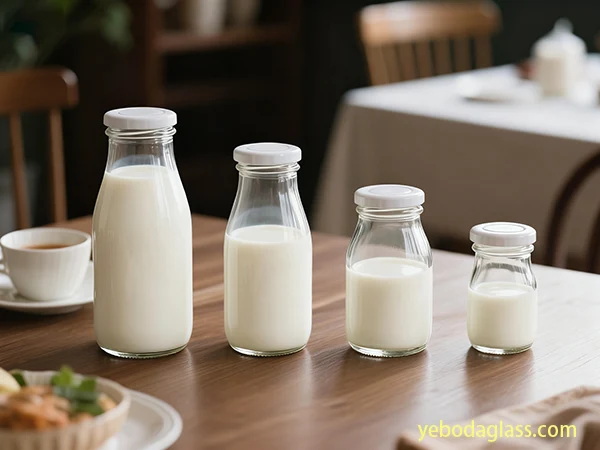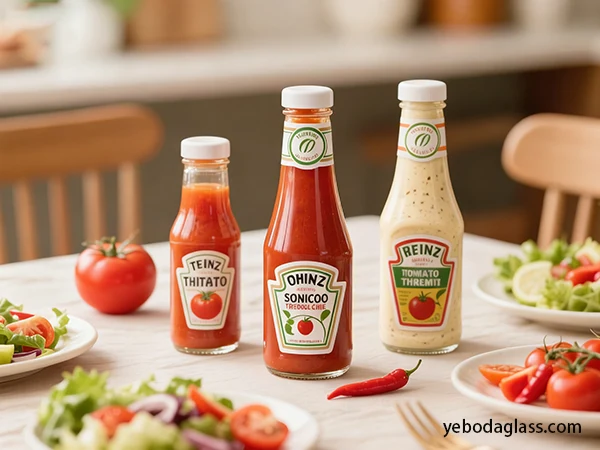Inrtoduction
A glass bottle company operating in today’s premium packaging sector is facing a wave of disruption, catalyzed by changing consumer demands related to sustainability and brand differentiation, as well as evolving technologies. Glass, because of its inertness, aesthetics, and recyclability, continues to lead this disruption across the premium packaging category. This report provides an overview of innovations in material science, advanced manufacturing, and functional design which are re-engineering premium glass packaging, as well as insights into commercial ultra-lightweighting and extreme customization. It is clear the spirits, fragrances, cosmetics, premium food/beverages, and pharmaceuticals categories will see significant disruption at retail in the next 3–7 years, enabled by breakthroughs related to improved glass formulations, high cullet content, ultralight packaging, precision molding, and integrated digital smart features. Innovation will be influenced by regulations and changing consumer preferences in developed regions of Europe, North America, and Asia Pacific. The future is seen to be more circular, more digitally connected, and designed with aesthetically pleasing products, presenting engineering, design, and brand opportunities and/or risks moving ahead.
1. The Evolution of Premium Glass Packaging
Premium glass packaging is synonymous with a company’s overall promise of premium quality, extreme luxury, and sustainable practices; it literally serves as tactile and visual statement about the product inside. The concluding paragraph of this report will highlight relevant medium-term innovations (3 to 7 years) that will affect this critical segment. The glass packaging industry is strategically vital to premium global growing markets, since it is 100% infinitely recyclable, produced from relatively readily available domestic resources, and considered safe and pure. The global glass packaging industry is forecast to rise from USD 69.83 billion (2024) to USD 112.64 billion (2032) which is an annual growth rate of 6.16%. There are rising consumer interests in sustainable packaging solutions, disposable income is growing, while e-commerce is on the rise. As a leader in glass bottles, Yeboda can effectively capitalize on these evolving advancements.
2. Material Science Advances for Improving Performance and Sustainability
The advances in material science are qualitatively changing glass properties so it can be more durable, sustainable and user-friendly as premium packaging.
2.1. Durable Glass Make Ups
Advances in glass make up and post production treatments are changing the way glass goes from fragile to durable.
- Chemical Tempering: This increases the properties of glass by placing internal compressive stress through induces treatments. Result: improved impact and thermal shock resistance.
- Laminated Glass: multi-layers with interlayer bonding that improves strength and safety reduces the likelihood of injury upon breakage.
- Aluminosilicate Glass (Corning Valor® Glass): Corning produced aluminosilicate glass has advanced in new makeup compositions to eliminate delamination across pharmaceuticals proving drug safety during manufacture, hold and delivery.
- Low-E Coatings and The Adhesion’s Properties of Advanced Spacer Bars: The potentially of these coatings to advance the mission of thermal performance and reliability through improving energy efficiency in a specialized package requiring temperature stability is seen for sustained access at the point of care.
2.2. Increased Recycled Content Integration (Cullet Utilization)
The push for a circular economy accelerates the incorporation of recycled glass (cullet) with obvious environmental and economic advantages.
- Infinite Recyclability with Economic and Environmental Benefits: Glass is infinitely recyclable. The use of cullet saves money and reduces CO2 emissions. For example, every 10% cullet substituted reduces energy costs by ~3% and CO2 emissions by ~5%. A ton of cullet saves 1.2 tons of virgin materials (including 850 kg of sand) and may replace up to 95 % of the virgin materials.
- Closed-Loop Recycling Programs: The “Close the Glass Loop” initiative (June 2020) aims to achieve a 90% average collection rate across the EU by 2030 and maximize the bottle-to-bottle recycling process. In 2023, the EU average reached 80.8%.
- Challenges and Opportunities for the Maximum Use of Cullet-based Glass:
- Increased Defects: Cullet will generally lead to an increase in defects, particularly in food/beverage packaging. This is generally due to containing imbalances and impurities within the cullet; also, glass based packaging which is heat treated and rapidly cooled leads to weak points.
- Contamination: The contamination will be high from post-consumer sources- these high contaminants such as metals, ceramics, and non-glass will sometimes create weak points.
- Inspection Technology: Newer inspection systems such as Peco InspX X-ray, provide real-time inspection of small defects in the cullet stream.
- Cullet Preparation: The preparation of the cullet stream must consist of thorough cleaning, removing debris and crushing. The cleaning of all cullet needs to wash away dirt and remove contaminants before being melted.
- Glass Fines: ~20% of crushed glass becomes unusable ‘fines’. Companies like Ardagh and Sheffield Hallam University are exploring compacting fines into briquettes for melting.
- Industry Commitment: O-I Glass focuses on sustainability through increased cullet usage.SGD Pharma uses 20% post-consumer recycled (PCR) glass cullet,Bormioli Luigi offers up to 15% PCR for perfume bottles, and Stoelzle’s PharmaCos line uses up to 73% recycled content in amber glass.
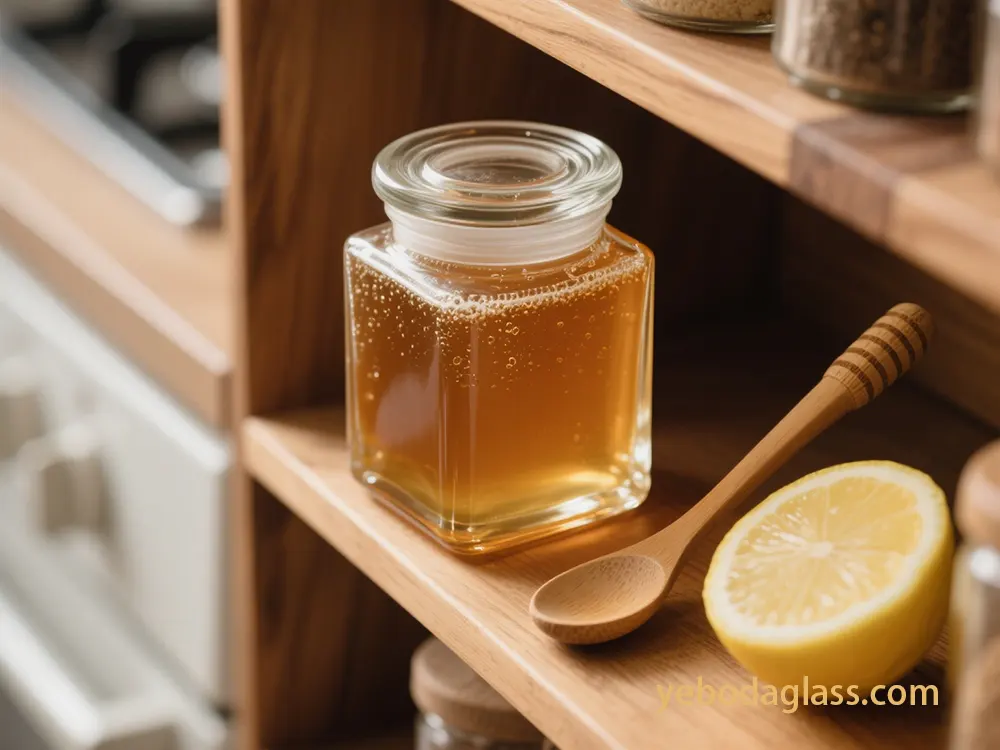
2.3. Novel Surface Treatments
Surface treatments facilitate improvements in the durability, aesthetics and function of glass, and can show significant improvement in scratch resistance and protection of product.
- Silane Coupling Agents: Enhance adhesion between glass and polymer matrices to improve composites fracture toughness.
- Frekote Treatment: Frekote Treatment can improve toughening performance during the test preparation stage with development of poorly bonded particles in the epoxy matrix.
- Hygrthermual Aging Effects: Considerations of the longterm performance of composites with silane-treated glass were made to account for environmental impacts which affect usability and toake note of the need for advanced testing.
- Transcrystalline Polypropylene Layers: A special treatment can also be used to promote the appearance of a transcrystalline polypropylene layer in GLA/PP laminates, which may influence mechanical and other properties.
- Scratch and abrasion resistance: High-gloss glazes usually provide better protection materials than low-gloss materials. Vetropack’s Echovai Technology in their thermally tempered lightweight glass offers excellent labels with much higher resistance to abrasion and increased reclamation and circulation rates compared to non-treated product.
- UV Protection: For UV light-sensitive products, transparent UV filter products are available such as Stoelzle’s Lumi Coat with Nexdot which filters out damaging UV rays without affecting transparency.
- ‘Green’ solutions: Some treaters, such as Novel Surface Treatments Ltd. are committed to only using eco-friendly chemical products for their glass treatment processes, which is a clear indicator that the industry is focusing on effective processing and sustainable processes.
3. Advanced Manufacturing Methods: Precision, Lightweighting, and Efficiency
Manufacturing innovations enable unprecedented precision, significant weight reductions, and enhanced efficiency in glass bottle production and decoration.
3.1. Precision Moulding and Forming Processes
Precision moulding allows complex designs, pushing the boundaries of glass aesthetics.
- Complex Designs: Newer machinery supports higher levels of precision and accuracy to enable complex designs.
- Narrow Neck Press and Blow (NNPB): Important for lightweight glass. Replaces the traditional blow and blow process for pressing the liquid glass into the cavity, creating further composition control with thinner, more uniform walls in the glass bottle.
- Finite Element Analysis (FEA): Used to recognize stress points that enable the designer to optimize factors for lightweighting while maintaining structural integrity.
3.2. Ultra-Lightweighting
Ultra-lightweighting glass bottles is focused on the environmental and freight savings associated with reduced glass weight.
- Reduction of weight associated benefits: Lightweighting reduces the consumption of raw materials, production emissions and logistics costs, with a possible CO2, savings of 12-17%.
- Industry Leaders: Toyo Glass owns roughly ~60% of the Japanese ultra lightweight bottle market because they have high levels of technical skill for melting, design, producing, and inspecting.
- Example Specifics: Vetropack made terrific savings (i.e. 20–30 grams in 330ml beer bottles and 50-80 grams in wine bottles). SGD Pharma’s NOVA range cut CO2 emissions by 20% for a 200 ml bottle.
- Echovai Technology: Vetropack’s Echovai has an enabled process to produce returnable bottles out of thermally tempered lightweight glass that cut weight by approximately a third increase strength and making them highly abrasion resistant. This allows for a greater number of bottles to fit per pallet, and significantly reduces the volume of logistics, and the associated CO2 footprint (i.e. Mohrenbrauerei reduced almost 1,000 tonnes per year, with CO2 emissions reduced to a quarter).
- Joint Lightweighting: Codorníu and Verallia developed a Cava bottle 775 grams, with roughly 125 gram reduction per bottle. Pochet Group’s Halo Lightweight concept reduced material weight of closure caps by 25% compared to standard caps.
3.3. Qualified Embellishment Techniques
The embellishment techniques provide good designs, bold colors and original textures that allow brands to differentiate themselves in competition.
- Digital Printing: Can provide one-off, unique, personalized and high-resolution embellishment with photographic finishes. Digital printing also allows for the easy transfer of elaborate designs.
- Special Coatings/ Finishes: When layers of paint or other materials are applied, unique colors or finishes (such as shiny matte or metallic) can be achieved, while adding depth. Coatings can be spray-coated or in-mold colors. Also, Bormioli Luigi’s “Inside Mirror” which is a special embellishment developed to create an internal metallized decoration for a feel of luxury.
- Traditional techniques: Screen Printing, acid etching, pad printing and hot foil stamping are techniques that will always be relevant due to their overall aesthetic feel.
- Development Techniques: Direct printing, laser etching, and 3D printing to disrupt the industry with detail, colour and complexity with geometric shapes.
- Digital Technology: 3D modelling software to visualize your ideas prior to production, and machines that are computer-controlled can accurately print the decoration providing less wasted time, decreased production errors and a more efficient operation.
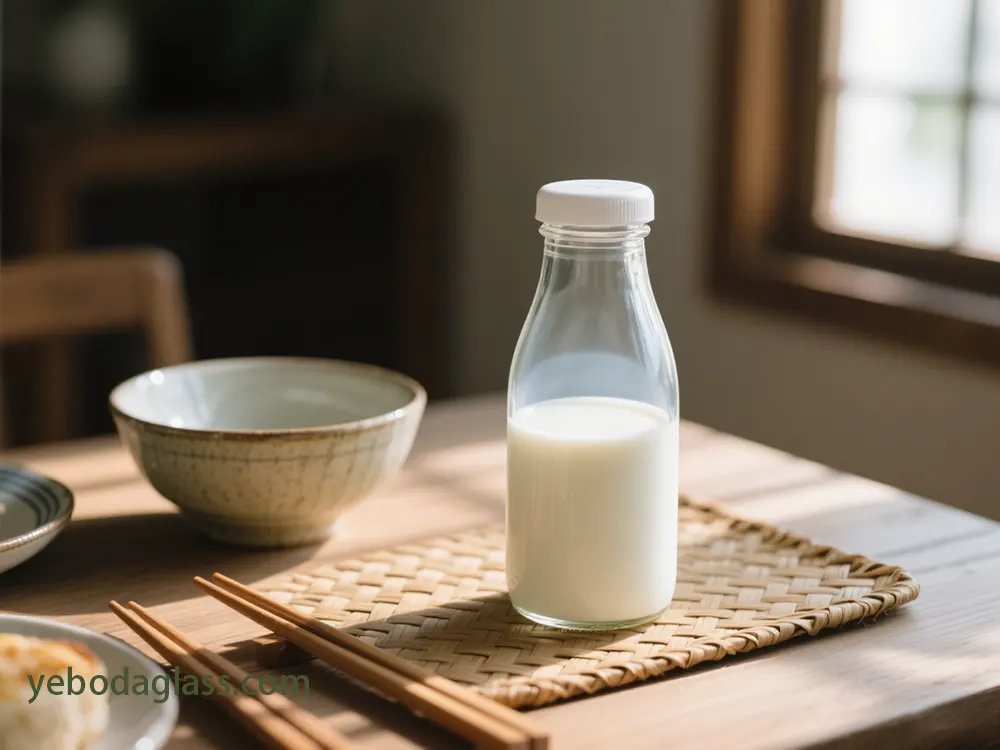
4. Design Aesthetics and Functional Integration: Enhancing Consumer Experience and Security
Today, glass packaging allows technologies like haptic experience strategies and smart technologies to enhance sensory interaction with consumers and fortify product integrity and security.
4.1. New Design Principles and Haptic Textures
Design is increasingly a multi-sensory experience, and haptic textures are an significant component.
- Haptic Textures: Tactile features such as embossed textures, frosted finishes or textured coatings improve perceived quality and individuality.
- Minimalist Design: Apparent in the elevated lean towards minimalist design, fewer design elements, clean lines with subtle branding is also evident in marketing to consumers who prefer clean lines, and less cluttered or busy designs to exemplify high-end products across spirits, fragrances, and cosmetics.
- Custom Shape: Precision molding and advanced manufacturing techniques have enabled companies to create custom shapes and elaborate designs, a thankless practice for some companies producing products with funky bottles that can be perceived as works of art, their shape and their detail representing the company/brand identity.
- Functional Elements: Double-walled glass jars; frosted glass; air-tight sealed jars and tubs; UV protection in glass bottles; and a choice of dropper applicators are typical of many cosmetic packaging items with both aesthetic and functional properties. Transparent tubes for lip glosses and mascaras serve the purpose of product facilitation – visible use of product.
4.2. Integrated Smart Features for Traceability and Engagement
Digital technologies are turning glass packaging into interactive platforms.
- Integrated NFC and QR Codes: NFC chips and QR codes are presented to consumers for greater traceability, product information, and consumer engagement.
- RASTAL Smartglass®: Embeds an NFC chip in a drinking glass, which identifies each glass as unique.
- Consumer Engagement and Data Capture: NFC enabled glasses take individuals to a mobile website with product information, marketing and sales information, in real-time with different engagement and campaigns, along with primary data capture.
- Gastronomy Applications: NFC glasses used in restaurants support communication reducing administrative effort, and allow cashless payment.
- Automated Dispensing and Payment: NFC technology can trigger dispensing systems when presented with the compatible glass allowing automated dispensing and payment.
- Anti -Counterfeiting: NFC chips and QR codes giving unique identification, can provide solid anti-counterfeiting and product authentication by virtue of being beyond premium.
4.3. Cosmetics
The cosmetics industry balances a large amount of luxury, with sustainability and functional design playing a large role.
- Sustainability and Luxury: Luxury packaging is driven by the inevitable dual demand for sustainable and luxury formats.
- Glass: Innovative uses of glass include: double-walled glass jars, frosted glass jars, with air-tight seals, UV protected glass, dropper applicators and minimalist designs are gaining momentum.
- Airless Delivery Systems: The internal plastic containers have been removed for sustainability purposes.
- Refillable Containers: Refillable glass cosmetic bottles are attractive to consumers, and brands are investing in refill stations and programs for reusable bottles to put an end to waste.
- Clear Tubes: Clear glass tubes for lip glosses and mascaras help consumers see the color of the product as well as how much of it is left. Transparency is also the most prominent appeal factor.
4.4. Premium Food & Beverage
Glass includes the charisma of freshness for premium food and beverages.
- Fresher Product: Being a non-porous fabric, glass will keep the flavors and aromas of gourmand ingredients and premium liquids intact.
- Visually Assess the Product: Buyers check the exceptional of the product with their very own transparency, which builds purchaser consider.
- Protection from Light: Frosted or tinted glasses defend mild-sensitive merchandise; consequently this could in the end maintain the fine and shelf lifestyles of the product.
- Reusable Beverage Bottles: refillable glass bottles may be reused approximately 25 times or more, which lowers the CO2 emissions consistent with bottle/container substantially.
4.5. Pharmaceuticals
Glass packaging innovation in pharmaceuticals is focused on safety, quality, and chemical inertness for potentially sensitive formulations.
- Safety & Quality: Glass innovation is very important when developing complex pharmaceutical molecules.
- Chemical inertness & barrier properties: Glass is non-reactive, and is therefore ideal for sensitive formulations. As a barrier, glass has great performance because it is moisture-proof and does not allow O2 and other contaminants.
- Delamination elimination: Corning\’s Valor® Glass, an aluminosilicate glass is a prime material for eliminating delamination problems in a pharmaceutical setting.
- Sterilization performance and compliance: glass has the ability to withstand sterilization. Innovations in manufacturing quality glass will exceed compliance for the stringent regulations involved in pharmaceuticals.
- Tamper-evidence and Child-resistance: Stoelzle manufactures some special child-resistant closures for their PharmaCos line for product safety.
- Applications: Typical applications include vials, ampoules for injectibles, bottles for syrup, and cartridges for prefilled syringes.
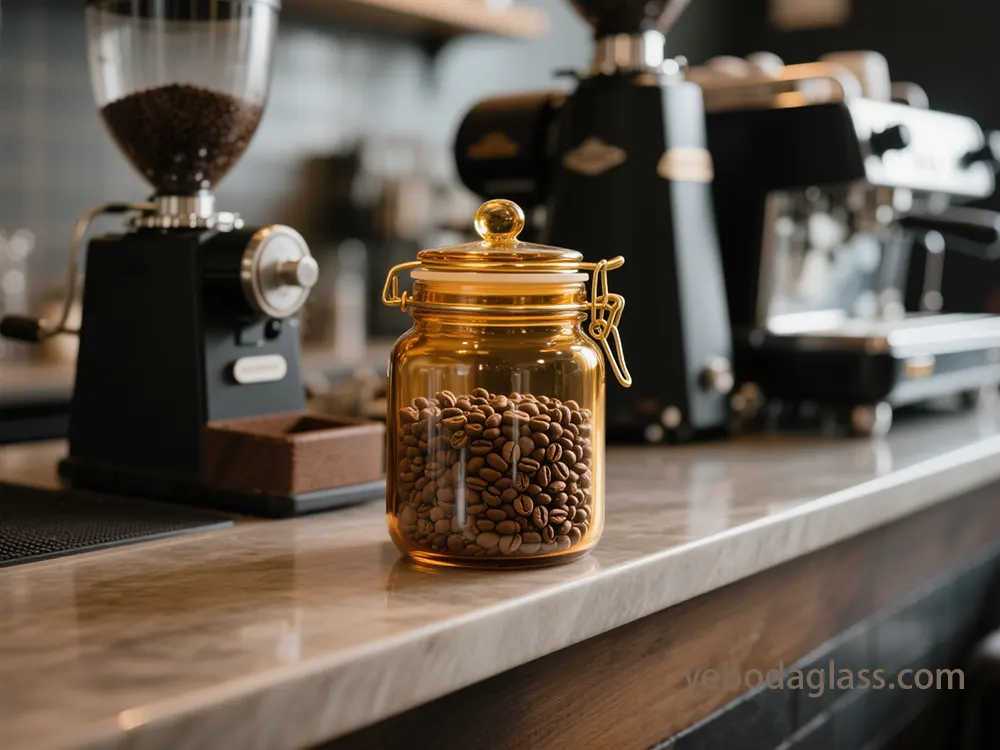
5. Global and Regional Innovation Hotspots: Trends and Adoption
Glass packaging innovation is global, with distinct drivers and trends across key regions.
5.1. Europe
Europe is a pacesetter in glass packaging innovation, with elements inclusive of stringent guidelines and a mature top rate marketplace contributing to this.
- Market Growth: From USD 22.45 billion (2025), it is forecasted to develop to USD 26.29 billion (2030), with bottles’ share status at round 72% (2024).
- Regulatory Influence: EU targets when it comes to recycling and waste reduction, especially concerning the round economic system, are the major drivers.The Packaging and Packaging Waste Regulation (PPWR) lays down that all packaging should be recyclable by the year 2030 and also seeks to reduce wastes to the greatest extent possible. The Single-Use Plastics Directive (SUPD) is an indirect supporting mechanism for glass as a sustainable alternative.
- EPR and DRS: Extended Producer Responsibility (EPR) companies facilitate much higher rates of glass recycling. While the PPWR calls for Deposit Return Schemes (DRS) on cans/plastic bottles by 2029, FEVE demands DRS improvements for current glass EPR schemes, worried that DRS may in fact detrimentally affect glass recycling at least in terms of quality. Germany went in for DRS in 2003 and has excellent PET recycling.
- Decarbonization Efforts: The European glass container industry invests over €600 million annually in innovation and decarbonization, aiming for net-zero emissions by 2050. Developments like O-I’s MAGMA, increased cullet usage, and electric furnaces are key.
- Consumer Preferences: Eco-conscious consumers, especially in Sweden and Denmark, drive demand for glass, particularly with transparent lifecycle communication.
- Challenges: Tracking recycling rates is harder with output-based reporting.Inconsistent recycling systems hinder effectiveness.High energy prices also pose a challenge.
5.2. North America
North America possesses one of the major markets of glass packaging products owing to the preference for sustainability and growing industries.
- Market Growth: Estimated to be valued at USD 11.42 billion in 2024 and expected to grow to USD 15.71 billion by 2033 at a 3.61% CAGR. The US holds 62.4% of the regional revenue share.
- Driving Factors: Growth in the alcoholic beverages market in the US is increasing. Demand for eco-friendly sustainable packages drives consumers.
- Regulatory Impact: California and Colorado set EPR laws. California and New York’s carbon emission caps mandate cleaner technology investments. Canada’s EPR for industry sectors includes a 30% carbon intensity reduction by 2030.
- Premiumization: Frosted glass and other glass types remain in high demand for conveying quality and luxury. They are widely used in alcoholic beverages, gourmet food, and high-end cosmetics.
- Fastest Growing Segment: Projected to drive the fastest growth in the US pharmaceutical market is glass packaging, with a CAGR of 5.9% through 2033.
- Competition: Glass packaging products face competition from metal cans and PET bottles which are lighter and less fragile.
5.3. Asia-Pacific (APAC)
Initiatives taken closer to urbanization, growing earnings degrees, and problem for the environment as some of the many elements contributing closer to the boom of the APAC place as a marketplace for glass packaging.
- Market Growth: Having the most important international market percentage, APAC is projected to attain USD fifty nine.09 billion through 2033 with a five.Seventy five% CAGR boom.
- Growth Drivers: Demand for premium packaging, increasing purchaser cognizance, strict regulations, and rising marriage charges at the side of converting existence.Demand is particularly amplified through westernization and income shifts for the food and beverage sector, as well as for alcoholic beverages.
- Premiumization: Strongly impacts the glass packaging market of Japan, where consumers purchase high-quality, aesthetic packaging glass at a premium. Glass is taken as a mark of luxury, advancement, and quality. South Korean brewers showcase transparency through the use of clear bottles.
- Technology Adoption: Growth and the advancement of glass manufacturing to include the use of lightweight materials as well as the use of smart packaging that allows tracking, temperature control, and freshness indicators all contribute towards market growth.
- Key Countries: India now stands as the fastest-growing market, projected to reach USD 4,856.9 by 2030 while Japan holds a steady market growth aided by initiatives for reduction of plastic waste. China is expected to lead global revenue by 2030 accounting for 41.6% of APAC revenue in 2023 and India is the fastest-growing regional market.
Participation as a challenging factor include strict regulations, offset with the cost of high energy consumption along with the cost pressures of loading.
6.Future Outlook: Trajectories and Disruptive Potential
The future of premium glass packaging is characterized by continued innovation, driven by sustainability, technological convergence, and evolving consumer expectations.
6.1. Trajectory of Glass Bottle Innovations (Next 3-7 Years)
Innovations in glass bottles over the next three to seven years will focus on:
- Increased Sustainability: Expanded refillable/reusable models, greater strength-efficient melting (electric powered, hydrogen furnaces), and similarly integration of excessive PCR content material.
- Extreme Lightweighting: NNPB’s optimized geometries and ongoing traits in skinny-wall technology will promote weight reduction without sacrificing energy.
- Advanced Functional Coatings: advent of multipurpose coatings with greater anti-shatter, UV, and scratch resistance in addition to lively barrier abilties to increase shelf life.
- Hyper-Customization and Personalization: By permitting formerly unheard-of levels of design complexity and personalization, digital printing and precision molding will produce one-of-a-type, restrained-version packaging.
- Integrated Smart Technologies: Widespread use of trendy embedded sensors, NFC, and QR codes to beautify consumer engagement, traceability, and anti-counterfeiting.This will move beyond trustworthy records alternate to consist of deliver chain transparency and interactive reviews.
- Hybrid Material Solutions: Increased exploration of hybrid designs combining glass with sustainable closures (metal, ceramic, timber) and modern allotting structures minimizing plastic use.
6.2. Emerging Technologies and Disruptive Potential
Apart from gradual enhancement, a few innovative technologies have the potential to disrupt entire industries.
- Additive Manufacturing for Glass (3D Printing):
- Development Stage: Direct glass printing (DGP) and binder jetting of powdered glass promising methods for intricate shaped and customized glass articles.
- Applications: Early applications are in prototypes and custom molds which improve design iteration cycles and enable customization. These are likely to be early adopters in niche industries with low demand but high design complexity.
- Commercial Viability: These niche uses could be commercially useful in about 3 years, wider adoption in packaging is still 5-7 years out due to the need for scaled production, cost, consistent quality, and lower pricing issues.
- Challenges: Significant challenges remain in technique scaling, costs from materials, glass quality, thermal regulation, and glass finishing like precise heating and subsequent polishing, coating, and annealing.
- Bio-Based Glass Alternatives:
- Development Stage: The current focus is to extract bio- based glass from agricultural residue like rice husks to lower traditional glass based silica and increase sustainable practices.There is also development of bioglass composites.
6.3. Potential Market Shifts and Strategic Implications
All manufacturers and producers will need to adapt to new strategies based totally on the continuing and rising changes in the marketplace.
- Move to Circular Economy Models: Focus will shift greater in the direction of reuse and fantastic recycling so that you can require new investments in circular supply chains and infrastructure.
- Greater Customization and Personalization: Brands will interact their customers with deeper brand loyalty thru emerging decoration strategies and molding strategies for absolutely custom designed packaging.
- Data-Based Packaging: Smart packaging will offer unprecedented quantities of actual-time facts approximately consumer interaction, the complete deliver chain, and the product.This data can help in achieving much better results with informed decisions and precise targeting.
- Resiliency in the Supply Chain: Enhanced packaging materials will allow for more lightweight and more resilient supply chains which will reduce transportation and breakage costs.
- Differentiation through Sustainability and Technology: Brands incorporating sustainable glass packaging will gain a reasonable competitive advantage.
- Strategic Imperatives: Companies must allocate funds toward the development of new production line to integrate lightweight, durable and cost-effective alternatives.
Conclusion
Glass container innovating activities undoubtedly change the face of premium packaging. Glass itself keeps innovating with the advancement of material sciences that continue working in improvising the form of a carton making it better in terms of durability, sustainable, and lighter; advances in manufacturing processes which impart the ability for weight-savings and complexity of design; and finally allowing smart technology integration that gifts consumers with an experience while giving them an edge in security. The global market (mainly spanning throughout Europe, North America, and Asia-Pacific) is actively engaged in these glass-related advances partly because of regulatory pressures and partly to please an eco-conscious consumer. Over the coming 3 to 7 years, the destination of glass packaging will be much more sophisticated and sustainable and digitally integrate from the stakeholders’ view.For all stakeholders, a critical first step is clear: embrace innovations, invest in circular supply chains, and take advantage of technologies – not just to put products in packaging, but also to tell an interesting story about the product’s quality, luxury and environmental responsibility.

